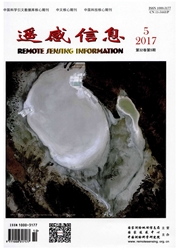

 中文摘要:
中文摘要:
针对区域地面沉降空间演化格局分析较少问题,选用小基线雷达干涉测量技术(SBAS-InSAR)获取了北京典型地区的地面沉降数据,并利用全局Moran′s I和局部Moran′s I指数对研究区地面沉降格局特征进行分析。结果表明,研究区地面沉降速率最大值为-110mm/a,中部、东南部沉降严重,其他地区相对轻微;该区域地面沉降全局空间自相关十分显著,全局Moran′s I指数达到了0.8(p=0.001),局部空间格局包括3个亚区,分别是高集聚区、低集聚区以及非相关区;热点分析结果表明地面沉降存在过渡带,过渡带不仅是地面沉降的未来发展方向,同时还存在不均匀地面沉降,是未来地面沉降防治的重点关注区域。
 英文摘要:
英文摘要:
For relatively small problems of spatial pattern characteristics of land subsidence, we investigated Beijing typical area land subsidence monitoring results using Small Baseline Subset Interferometric Synthetic Aperture Radar (SBAS-InSAR) technique in this paper. On this basis, we used global Moran's I and local Moran;s I to analyze the pattern characteristics of land subsidence in the study area. The results show that maximum land subsidence rate in Beijing typical areas is 110 mm/a, and more serious land subsidence happened in central and southeastern than other regions; spatial autocorrelation of land subsidence in study area is very significant, with Global Moran's I reached 0. 8 ( p = 0. 001 ) , and local spatial pattern analysis divided the study area into three sub-regions, including the high concentration area, low concentration area and non-related area. The results of hot spot analysis show that land subsidence has transitional zone, which is the future development direction of land subsidence, and in transitional zone, uneven land subsidence is an important concern in future land subsidence prevention.
 同期刊论文项目
同期刊论文项目
 同项目期刊论文
同项目期刊论文
 PS-InSAR technology and multi-spectral remote sensing Construction Index load density on Influence o
PS-InSAR technology and multi-spectral remote sensing Construction Index load density on Influence o The Relationship Between the Variation Rate of MODIS Land Surface Temperature and AMSR-E Soil Moistu
The Relationship Between the Variation Rate of MODIS Land Surface Temperature and AMSR-E Soil Moistu 期刊信息
期刊信息
